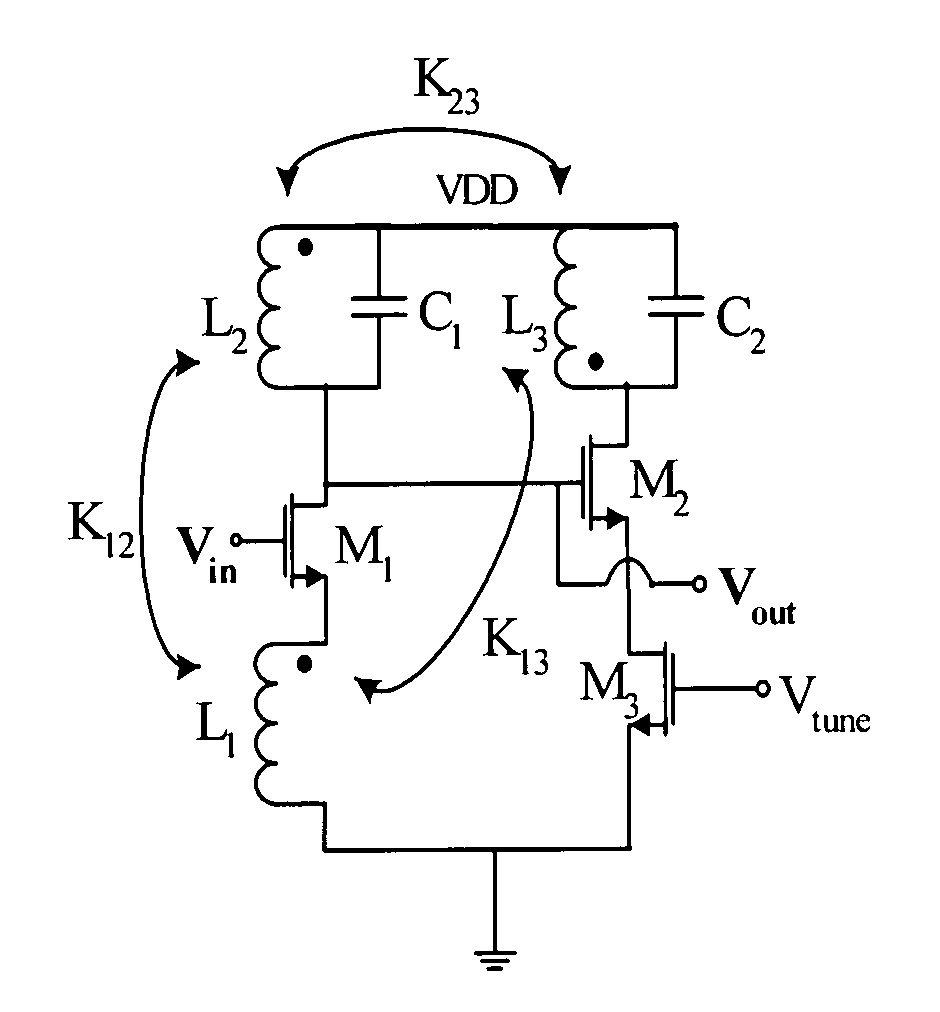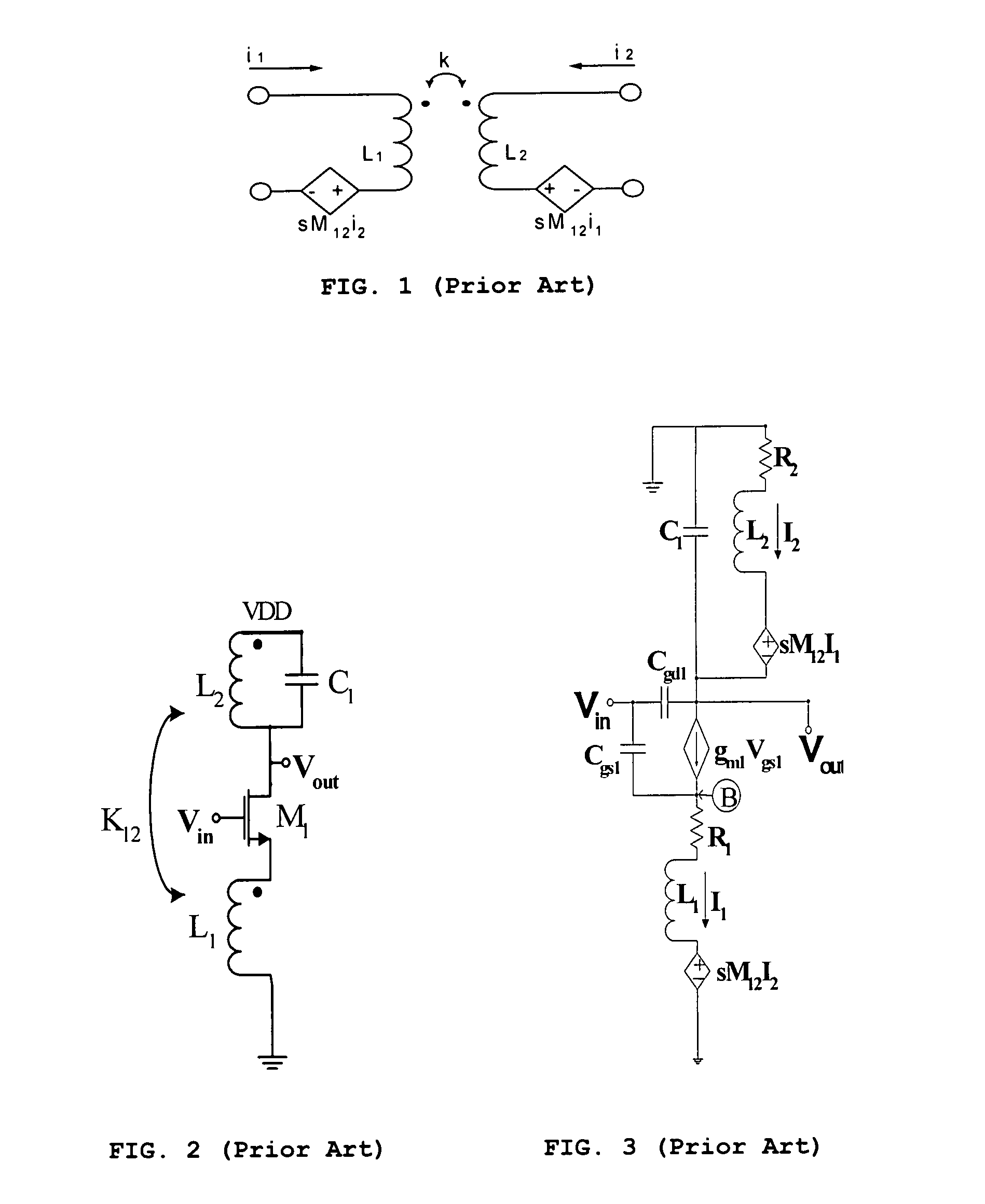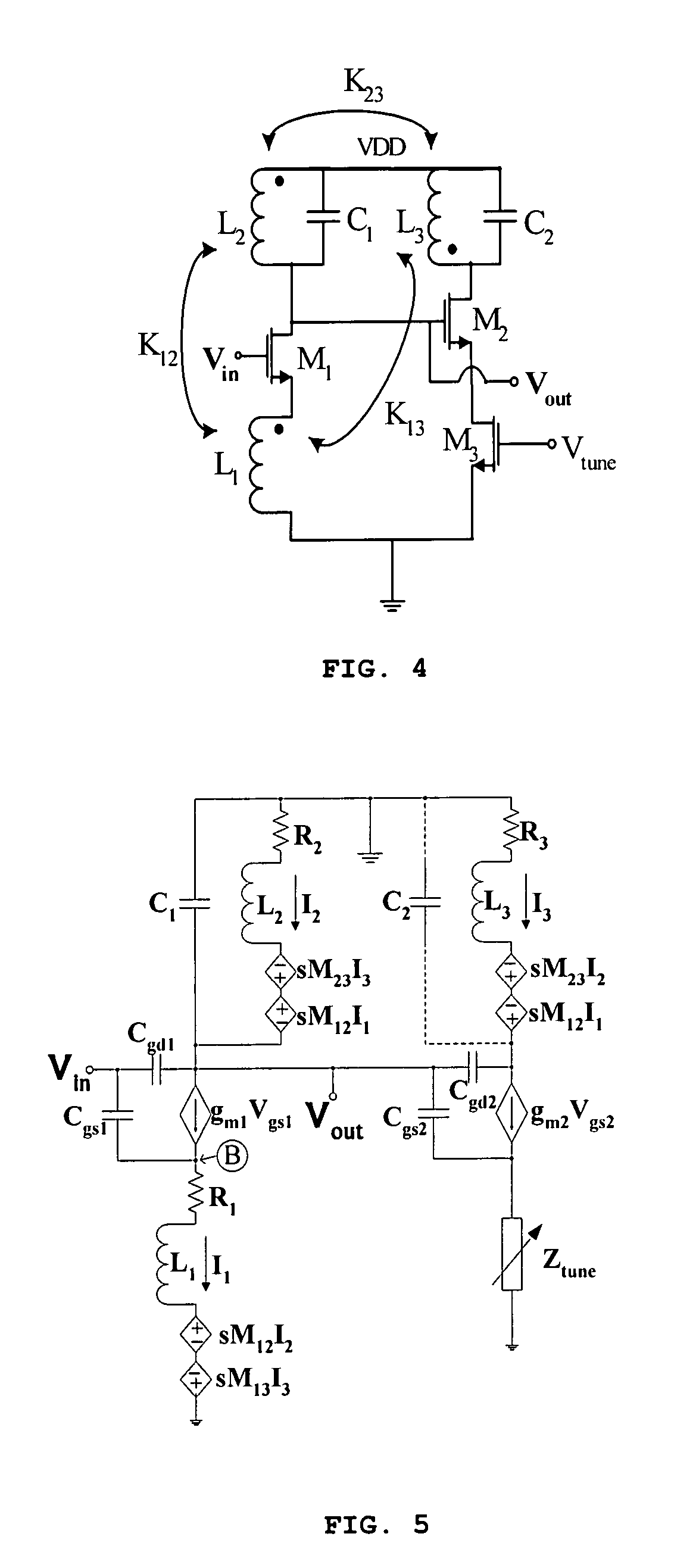Low-noise amplifiers
a low-noise amplifier and amplifier technology, applied in the direction of low-noise amplifiers, gain control, rf amplifiers, etc., can solve the problems of inability to achieve the optimal low-output impedance of the amplifier, the impracticality of classical topologies, and the vastly used cascode topology
- Summary
- Abstract
- Description
- Claims
- Application Information
AI Technical Summary
Benefits of technology
Problems solved by technology
Method used
Image
Examples
Embodiment Construction
[0019]A low-noise amplifier that utilizes multiple monolithic transformer magnetic feedback to simultaneously neutralize the gate-drain overlap capacitance of the amplifying transistor and achieve high gain at high frequencies when driving an on-chip capacitance is shown. A multiple transformer topology permits negative and positive feedback to be applied constructively, allowing for a stable design with adequate gain and large reverse isolation without Noise Figure degradation. The proposed LNA employs multiple inductive transformer feedback to introduce negative and positive feedback at specific nodes of the topology. This permits both gain and reverse isolation to be set at high values and be almost independent of each other. This technique eliminates the need for a cascode transistor and, therefore, low voltage operation is achievable. The use of multiple feedbacks relaxes the values of the inductor coupling coefficients and offers design flexibility regarding the values of the ...
PUM
 Login to View More
Login to View More Abstract
Description
Claims
Application Information
 Login to View More
Login to View More - R&D
- Intellectual Property
- Life Sciences
- Materials
- Tech Scout
- Unparalleled Data Quality
- Higher Quality Content
- 60% Fewer Hallucinations
Browse by: Latest US Patents, China's latest patents, Technical Efficacy Thesaurus, Application Domain, Technology Topic, Popular Technical Reports.
© 2025 PatSnap. All rights reserved.Legal|Privacy policy|Modern Slavery Act Transparency Statement|Sitemap|About US| Contact US: help@patsnap.com



